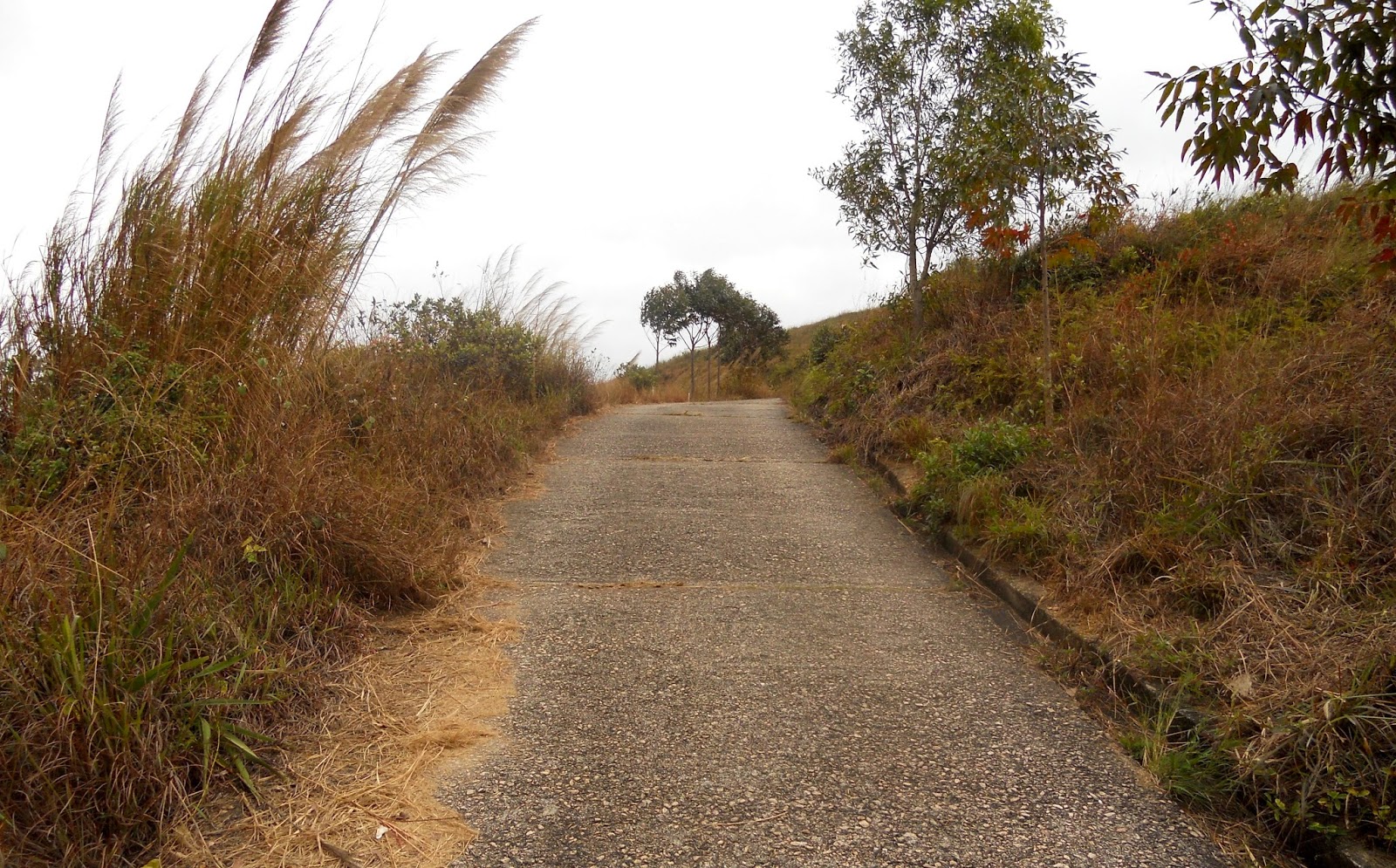These fragments I have shored against my ruins.There are scores of squatter huts in my neighbourhood, most of which have now been abandoned and their occupants rehoused. Inevitably, given the construction standards originally followed, such huts quickly fall into disrepair as extreme weather, termites, rust, creepers and other natural agents go to work.
T.S. Eliot, The Waste Land.
Some of these huts were more substantially built than the average, but most consist of nothing more than thin sheets of galvanized steel nailed to an insubstantial wooden frame. Surprisingly, many had both electricity and running water while still occupied. I frequently take a close look at such ruins, mainly to see whether there is anything worth recording before the hut in question is overwhelmed by the forces of nature.
This is the story of one such hut, located in the area covered by my recent post South Side Story. The footpath shown in the following photograph passes within 10 metres of the hut, but the hut is completely hidden by the encroaching jungle—and you would probably struggle to find the path anyway, even with detailed instructions—so it is likely to moulder away undisturbed.
The next photo shows the hut itself. The main living area is on the left of the picture, behind what must have been quite a substantial stove, but there is an extensive covered area behind the tree on the right.
Judging by the limited extent to which trees and other vegetation have taken over the structure to date, it is likely to have been abandoned quite recently, probably no more than two or three years ago. But who lived here? There are some clues:
This is a photo of the entrance to the main living area. The apparently cryptic jumble of letters and numbers on the wall indicate that the occupant(s) has been rehoused by the relevant government agency, although I do not understand any of the details that may be recorded in this code. Note the dark wooden cabinet, which is a common item of furniture in Chinese homes that functions as a shrine. This tips the probability towards the occupant(s) being elderly, while the presence of discarded fast-food containers on the floor suggests male occupancy.
Of course, this is all speculative, and I can only offer even wilder guesswork in my lame attempts to explain the next photo.
This was taken in what may once have been some kind of kitchen area (the white pillar is there to support a stone shelf along one wall, although there is no sink). It shows a large number of teacups and a few teapots discarded on the floor, and the obvious question is why. This strange phenomenon might have been explicable had all these items been made of plastic, but they are regular ceramic cups and teapots. I can’t help wondering whether they were accumulated here for roughly the same reason as that behind the piles of jars described in The Mystery of the Chinese Jars, and that remains a mystery that I’ve failed to resolve.
How long will traces of this building survive? It was never built to last, but I would still expect to see evidence of its having been here ten years later. A hundred years? There wouldn’t be any obviously visible traces, but anomalies in soil chemistry would give the game away. And after a thousand years, there is a good chance that there won’t be any humans around to look.
Like footprints in wet sand on the edge of a rising tide, this hut is destined to vanish, leaving no detectable trace of its ever having existed. Even this account of its existence will soon be read for the last time. Nothing lasts for ever.



























